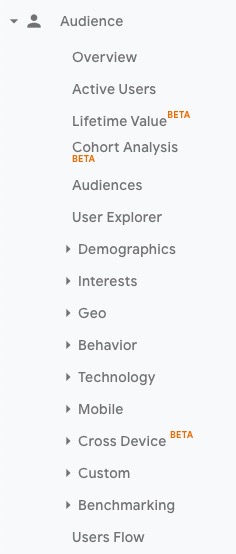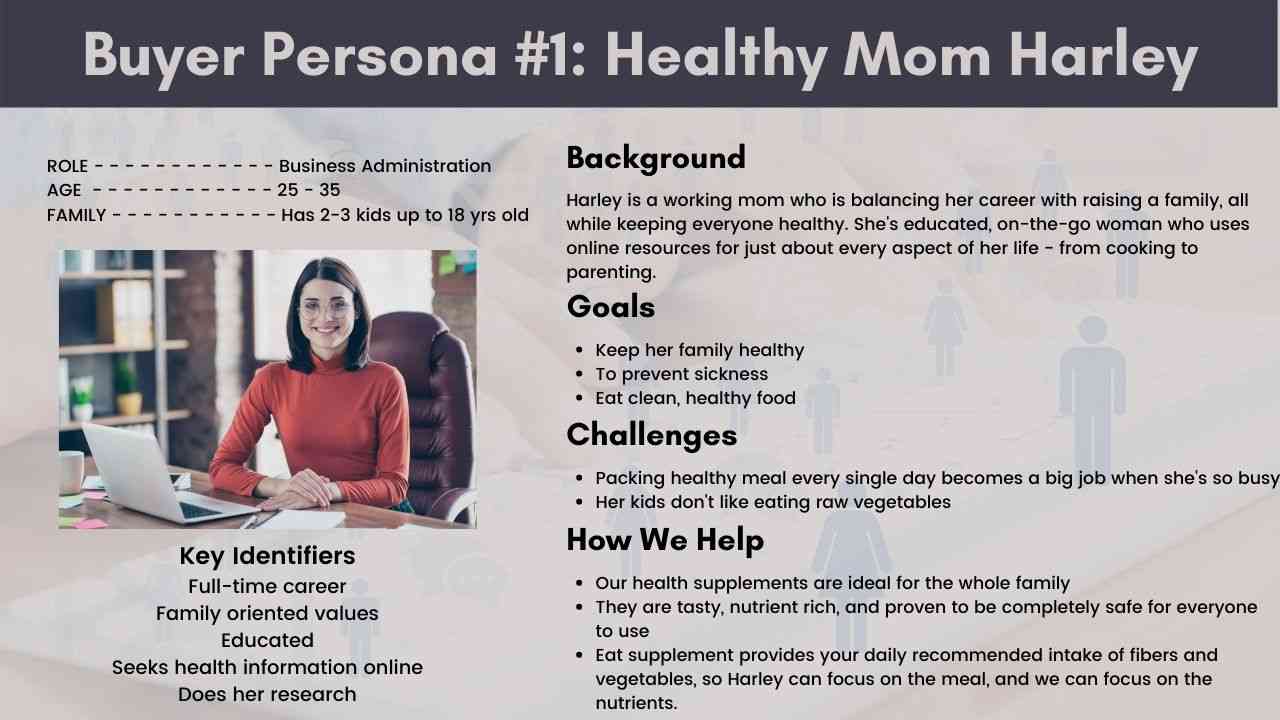How to Create a Buyer Persona (Complete Guide)

Creating an accurate buyer persona is probably one of the most important things to do before beginning any sort of marketing initiatives. Creating a Buyer Persona allows you to pinpoint exactly who it is you want to reach, and how you will do it.
Platforms like Facebook are getting bigger and bigger every year with now over 2.7 billion users. This means that we have the luxury as advertisers to narrow down our targeting to only target the people we want. But also the ones that, based on data, are more likely to buy and have the highest customer lifetime value (CLV).
What is a Buyer Persona?
A buyer persona is a somewhat fictional, generalized representation of your customers that are described based on the demographics, goals, motivators, and challenges they are facing.
Buyer personas are useful for marketing efforts and deciding what kind of content should be created in order to resonate well with your ideal customers, taking into account the way they consume content.
By focusing on the challenges you’re solving for, and how they consume content online, you can better define what their ideal buying process might look like.
B2C VS B2B Buyer Persona
In the case that you are selling directly to a customer – this is an individual who is using their own money and discretion to make purchasing decisions.
A consumer’s buyer persona will look slightly different than a B2B buyer persona since you don’t have to share as much information about their job roles and responsibilities. Rather you can focus more on who the person is, what they do in their day-to-day life, and how they make individual purchasing decisions.
In B2B, the buyer persona focuses heavily on the individual customer. But specific details about where the ideal customer works, what they do, and how they interact with their organization are especially important.
In B2B, the persona is not always the one in charge of making purchasing decisions, so those details need to be included in your description as well.
Asking the Right Questions
Discovering your buyer persona all starts by asking the right questions. We’ve created a list of questions you can ask yourself to get a much better understanding of out who your buyer persona is.
This is an amazing exercise you can do with your team, and clients as well. In fact, this is the exact worksheet we use with our clients. It’s really important that when you’re going through the Buyer Persona Worksheet, that you put yourself in your persona’s shoes.
4 Ways of Getting Data on Your Buyer Persona
Buyer personas are based on market research and real data about your existing customers.
But it’s important to recognize that not every customer is worth the squeeze. Your existing customers can be categorized into 3 groups.
Ideal customers: these are the ones that purchase from you often. Also known as repeat customers. They leave you great reviews and talk positively about your brand. They are easy to manage and don’t complain much.
Neutral customers: these are the customers who might buy from you here and there. They don’t cause too much trouble but aren’t raving advocates for your brand either.
Earthquake customers: these are the customers leaving bad reviews, and who are always on the phone with a support agent. It’s just a matter of time before they no longer deal with your company.
You should only be looking at the data of your ideal customers and no one else. After all, these are the ones that help you grow your business.
Now, let’s review 4 ways you can get data on your buyer persona.
1. Google Analytics & Search Console
Google Analytics is a great tool to get information about your users/customers. In can answer questions about:
– Demographics: age and gender.
– Interests: affinity categories (travel, movie lovers…) and in-segments (business services, advertising…).
– Geography: Language and Location
– Technology: browser and OS (Chrome, Safari, Edge…).
– Devices: desktop, mobile, and tablet
It’s great for questions you wouldn’t really ask your clients or you could but it would be a little weird… for example “John, What kind of device do you use to browse the web?”
Google Search Console can tell you what people are typing in Google’s search bar in order to find you. This data can help you identify what challenges they are facing when they land on your website.
2. CRM/POS Data
Open your customer relationship management (CRM) or your point of sale (POS) system and map out all the highest lifetime value LTV.
The goal is to come up with a list of customers that you can use and do more research on. These are the kind of customers you want to build your buyer persona around and choose to target.
After all, the more customers you have with high LTV, the more successful you will be as a business.
3. Customer Interviews
Interviewing your best customers is a great way to get an answer to the majority of the questions asked in the Buyer Persona Worksheet.
You can do this by simply talking to your customers on the phone or sending out a questionnaire.
Talk on the Phone
Depending on the size of your company, talking to your best customers on the phone or on a video conference call is probably the best way to get the answers you’re looking for, as long as they are not too personal.
Sometimes people will not want to disclose the information if they think it’s too personal, or even a bit awkward to answer over the phone. In this case, an anonymous questionnaire might be a better option.
The only downside is that talking to customers is time-consuming for both you and the client. So, if you decide to use this method we strongly recommend you to send your “interview request” via email with a video of you speaking to them directly. You can also offer a small incentive (coffee, 10% discount…) to entice more customers to participate.
Send a Questionnaire
Talking to your customers on the phone might not always be an option so you can use something like Google forms to send out a questionnaire.
The same concept applies here, in exchange for your customers time you choose to offer/give a small incentive.
4. Social Media
Social media has all kinds of information about all kinds of people. However, I wouldn’t suggest you going snooping around everyone’s profile to try to learn a bit about them (although you could automate this with Phantombuster) because most people have their privacy settings turned on, and it wouldn’t be efficient.
Luckily, the Facebook Insights is a powerful tool that comes with your business Facebook page. It provides you with important data about your target market including the users who visit your Facebook page ; respond to your ads; and engage with your posts (if you have +1000 likes). You can even analyze an audience if you imported the contacts’ email and phone number.
There are just some questions that are relatively weird to ask like “are you married?” or “What pages do you like on Facebook” So by using this tool, you can collect all sorts of invaluable information to help create your buyer persona – such as their age, location, gender, lifestyle, relationship status, job title, pages liked, household income, home ownership, household size, spending methods, purchase behavior, and much more.
Create Version 1.0 of Your Buyer Persona
Your buyer persona will most likely change as you evolve as a business. So, start off with a 1.0 version of your buyer persona and recheck it every six to twelve months.
The goal of creating a buyer persona is to find similar challenges a group of people face, and what online behaviors these groups of people have in common. Once you’ve done these 4 steps and found the commonality, you’ll be able to create your buyer persona 1.0
Depending on the size of your company, you may have 2-5 buyer personas. And that’s completely normal especially if you offer multiple services/products.
Here’s what your final description might look like if you are a supplement company selling health products and vitamins.









